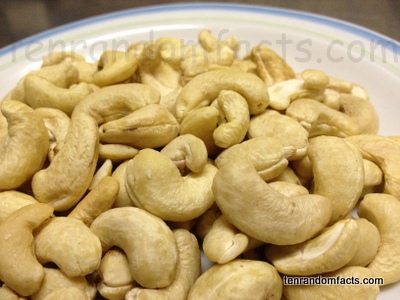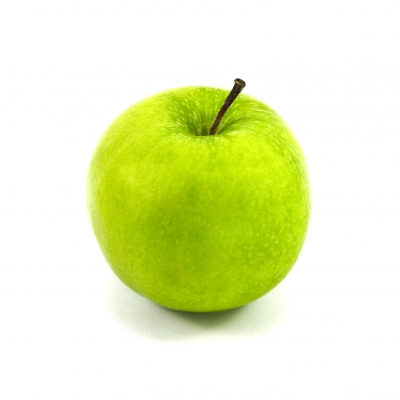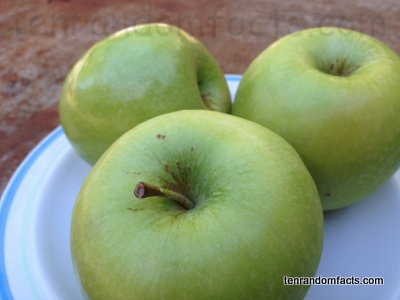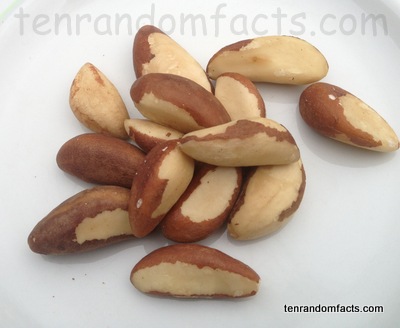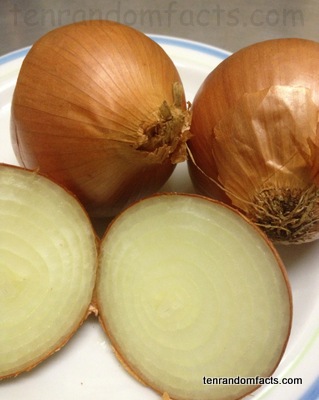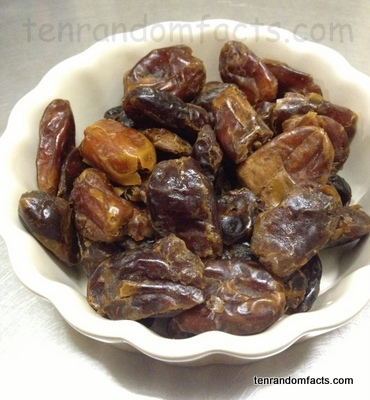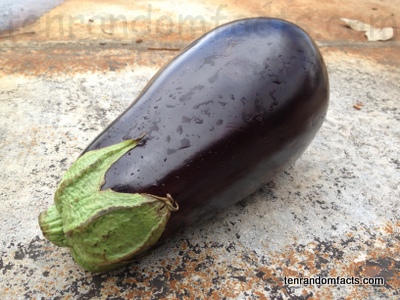
Eggplants do not grow eggs!
- Eggplants are native to India and are known as ‘aubergines’ in Europe and ‘eggplants’ in America, and are also called ‘brinjal’, ‘melongene’ and ‘guinea squash’.
- An eggplant’s scientific name is solanum melongena and the belong to the family Solanaceae, which is the family of nightshades, and they are related to tomatoes and potatoes.
- Eggplants are typically dark purple vegetables that grow 12 to 25 cm (4.5 to 9 inches) in length and have a spongy light coloured flesh, although they come in all different shapes, sizes and colours including an almost black colour, green, orange, white, and yellow.
- Eggplant plants are a perennial tropical plant that grow to 40 to 150 cm (16 to 57 inches) in height and have a white to purple coloured flower.
- Eggplants were named ‘eggplants’ in the 1700s in Europe, because some eggplants were white in colour and looked like bird eggs.
- Eggplants behave like a sponge during the cooking process, and can be baked, fried, stewed, grilled, steamed and stuffed, whilst also featuring in two of the most famous eggplant dishes, moussaka and ratatouille.
- Eggplants become more bitter with age, although are usually cooked to avoid or reduce the often bitter taste they have, and are sometimes cut, salted and rinsed before cooking to remove some of the bitterness and so that they absorb less oil or other liquid.
- China produced 58% of the total world production of nearly 42 million tonnes (41 million tons) of eggplants in 2010, and cultivated eggplants use more than 4 million acres (1.6 million hectares) of land worldwide.
- Eggplants have the highest nicotine content than all edible plants, although you would need to eat 9kg (20 pounds) of eggplant to match the quantity of nicotine in one cigarette.
- Some people are allergic to eggplants, which can cause reactions of itchiness, headaches and stomach irritation.
Bibliography:
Eggplant, 2013, World’s Healthiest Foods, < http://www.whfoods.com/genpage.php?tname=foodspice&dbid=22>
Eggplant, 2013, Wikipedia, < https://en.wikipedia.org/wiki/Eggplant>





